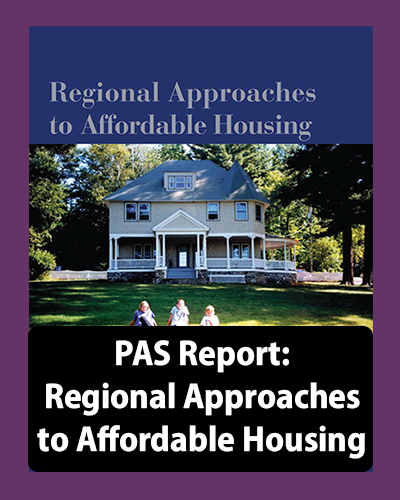Knowledgebase Collection
Housing Supply Planning

Image by storyset on Freepik
Urban, suburban, and rural communities across the United States face a housing shortage. The housing supply is not growing to meet demand, which disproportionately impacts low- and moderate-income residents by increasing the affordability gap, diminishing the quality of life for individuals and families, and slowing economic growth in communities.
To provide inspiration for local efforts to increase housing supply, the National League of Cities (NLC) and the American Planning Association (APA) partnered to create the Housing Supply Accelerator Playbook. The playbook presents a vision for a systems approach to addressing the root causes of housing shortages and increasing the supply of housing options that are diverse, attainable, and equitable. It presents a wide range of potential strategies and highlights noteworthy examples of local efforts in the areas of construction and development, finance, land use and regulation, and infrastructure as hurdles to increasing housing supply. This collection builds off the main themes of the playbook and serves as a complementary resource.
From this page, you can search for resources that provide background information and guidance on housing supply planning and find examples of local housing needs assessments, plans, and plan implementation tools from across the country. You can filter these search results by various geographic and demographic characteristics.
Contents
Featured APA Resources
Related Collections
Accessory Dwelling Units
An accessory dwelling unit (ADU) is a smaller, independent residential dwelling unit on the same lot as a single-family home. This collection catalogs resources that provide background, policy guidance, and examples of local plan recommendations and zoning standards for accessory dwelling units from across the country.
Affordable Housing Programs
Since the late 20th century, many communities have created programs to preserve or expand the local supply of affordable housing. This collection catalogs resources that provide background and policy guidance or demonstrate how local and regional agencies are using regulatory, investment, and assistance programs to promote or protect affordable housing.
Age-Friendly Communities
Age-friendly communities are places where the built and social environment is accessible to and inclusive of all residents — young and old. This collection catalogs resources that provide background and policy guidance or demonstrate how cities and counties are using plans, programs, and regulations to foster accessible and inclusive communities.
Downtown Revitalization
Downtowns are powerful symbols. For many visitors and residents, a vibrant downtown equals a healthy city. This collection catalogs resources that provide background and policy guidance and demonstrate how specific cities and counties are using plans, programmatic investments, and regulations to revitalize downtowns.
Grayfields Reuse and Redevelopment
Currently, many cities and counties across the U.S. have a large supply of vacant or underutilized auto-oriented commercial properties. This collection catalogs resources that provide background, policy guidance, and examples of local plan recommendations and zoning standards to facilitate the reuse or redevelopment of abandoned or underutilized commercial properties.
Group Housing
A group home is a dwelling unit occupied as a single housekeeping unit by a small number of unrelated individuals. This collection catalogs resources that provide background, policy guidance, and examples of plan recommendations and zoning regulations for various types of group living situations.
Improving Development Review
The development review process should be predictable, efficient, and open, and it should add value to the community. This collection catalogs resources that provide background, policy and procedural guidance, and examples of local organizational or procedural evaluations aimed at improving the efficiency or efficacy of local development review.
Inclusionary Housing
Inclusionary housing programs link affordable housing provision to private development by requiring or incentivizing developers to construct affordable housing units as part of market-rate residential projects. This collection catalogs resources that provide background and policy guidance or demonstrate how localities are using plans and development regulations to promote inclusionary housing.
Neighborhood Planning
A neighborhood plan presents a vision and a strategy to guide change within a discrete, contiguous, predominantly residential subarea of a city. This collection catalogs resources that provide background and policy guidance on planning for discrete, contiguous, predominantly residential subareas of cities, as well as examples of locally adopted neighborhood plans.
Planning and Zoning Enabling Laws
State statutes establish the framework for local planning activities. Through these laws, states delegate power to local governments to prepare comprehensive plans and adopt zoning and other land-use and development regulations. This collection catalogs resources that provide background on those state laws as well as the laws themselves.
Residential Infill Development
Residential infill development refers to the development of new housing on vacant or underutilized land in previously developed areas. This collection catalogs resources that provide background information and demonstrate how local and regional entities are using plans and plan implementation mechanisms to guide successful residential infill development.
Rethinking Off-Street Parking Requirements
Since APA published the High Cost of Free Parking in 2005, many cities and counties across the U.S. have reevaluated their approaches to requiring off-street parking for all new land uses and development. This collection catalogs resources that provide background, policy guidance, model ordinances, and examples of local policy-driven off-street parking requirements.
Tiny Houses and Micro Apartments
While the average amount of living space per person continues to grow in the U.S., there is a growing interest among property owners and residents in many communities in micro housing. This collection catalogs resources that provide background, policy guidance, and examples of local development regulations for tiny houses, tiny house subdivisions, and micro apartments from across the country.
Transit-Oriented Development
This collection catalogs numerous resources that provide background and policy guidance on, or examples of, how communities are using plans and regulations to facilitate higher-density mixed use development within walking distance of mass transit stations.
Zoning Reform and Code Writing
Zoning is among the most powerful tools local governments have to control future land use and development. This collection catalogs resources that provide general background, policy and process guidance, and examples of code evaluation reports and noteworthy recent zoning and development codes from various types of communities across the country.













